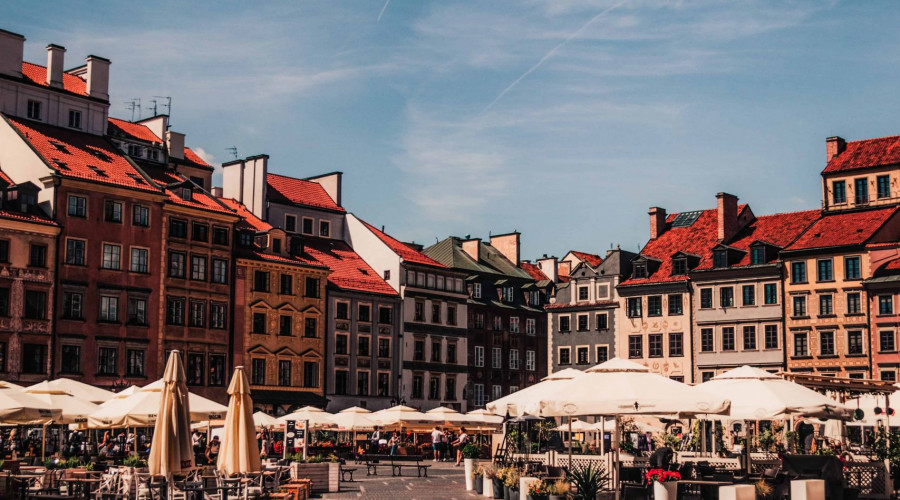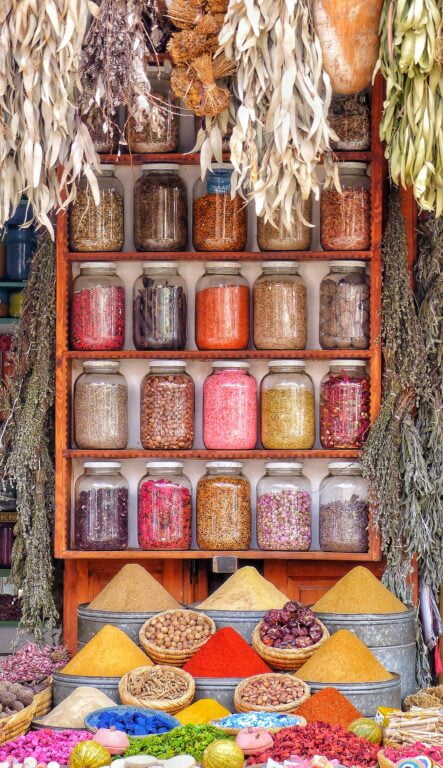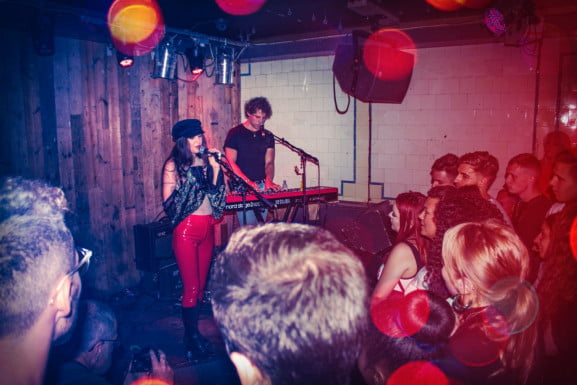What to See and Do in Budapest
This article serves as a whirlwind tour of the history and architecture of one of Europe’s most interesting and beautiful cities. In 1873, the towns of Buda, Obuda and Pest merged into the modern city of Budapest. Centuries of contact with Ottomans, Soviets, and Westerners have left numerous imprints on the city’s architecture and cuisine. You will learn more about that in this article.
There are plenty of things to do in Budapest, whether your interests are in food, history, nature, architecture or music. You may need to visit Budapest more than once to even get a brief look at everything the city offers. Turkey occupied Hungary for centuries, so Turkish influences are everywhere in the architecture of some older buildings, in the Turkish bath houses, and in some of the cuisine.
Geography of the City:
Like Paris and London, the most distinct geographic feature in the city is a river. The Danube river has inspired art, music, and poetry for centuries. The city is divided into 23 numbered districts, 6 on the Buda side of the river and 14 on the Pest side. Some districts are more residential, and some are more commercial. Several ornate and ancient bridges cross the Danube. The Chain Bridge is probably the most famous of the group.
Travel guides and locals often refer to this or that attraction being on the Buda side or the Pest side. Travel guides also tend to specify the district where attractions are located. This simple and logical scheme makes it easy to know where you are relative to tourist attractions and restaurants. Many towers and a few hills offer numerous opportunities to survey the city and the Danube River. The Elizabeth Lookout sits 527 meters above sea level, at the highest point in the city. This is a must-see location if you want to get a good view of the city and its many historical highlights.
Budapest Historical Highlights:
Budapest history is far longer and more complex that this short article could begin to cover. There are, however, several historical spots worth visiting even if you are not a huge history fan. This doesn’t even include the many architectural gems the city has on both sides of the river.
People have lived in the area of modern Budapest for over 2,000 years. Romans dominated the area for a time until Hungarians moved in during the 800s. Mongols sacked the city in the 13th century, then Ottomans conquered the area and controlled it over 150 years. The towns of Buda and Obuda on the west bank of the Danube River joined with Pest on the east side to form the city of Budapest on November 17, 1983.
Budapest is known as the City of Baths because there are many thermal springs under the city. In the 16th and 17th century, many of those hot spots were turned into bathhouses. Some of those bath houses still exist. Rudas, Kiraly, and Veli Bej are three of the famous historic baths. Some of the bathhouses are beautifully designed and restored buildings that are worth a look for architecture enthusiasts. The Szechenyi Baths, for example, are housed in a vast Baroque building.
The same thermal springs that fuel those bath houses may have helped create the caves the make for interesting excursions below the city. The caves under Buda Castle and the Budapest Caves Park are two well-known examples of the area caves.
There are also modern and luxurious spa facilities. The Four Seasons and the Danubius Health Spa are two places to go for a luxurious and relaxing spa experience. These spas and bath houses are scattered around the city, some in or near high-end hotels. The others are sure to be well-served by the city’s vast public transportation network.
Numerous religions and ethnic groups have contributed to Budapest’s history. The Romans, Ottoman Turks have contributed to the city’s architecture and cuisine. Westerners built hundreds of Baroque, Gothic, and Art Deco buildings in the 15th through 20th centuries. The architecture enthusiast could easily design a day trip around architectural history.
Whatever else it might be, Budapest is a city of museums. A recent search of Wikitravel reveals a list of over 25 small or less-famous museums of all sorts. There is the famous National Gallery featuring art of all kinds as well. The House of Terror is a grim, but interesting, museum devoted to Nazi/Soviet/Communist domination of the country. Memento Park, an outdoor sculpture museum in South Buda is also quite well known and popular.
Budapest is a fine destination for people who love shopping as much as they love museums.
Shopping in Budapest:
Budapest is not necessarily the shopping mecca that Paris and London are, but there are plenty of places to buy Hungarian art, clothing, and groceries. The Central Market Hall in District 9 is the best place to go for produce, souvenirs, and folk art. The Market also features a food court and a small Hungarian restaurant. There are at least four other similar, less known, markets around the city as well. Of course, there are also many local clothing stores and specialty food stores you can discover.
Shopping for clothes seems to be a popular hobby. Used clothing stores are popular with the working class and the middle class because Hungarian wages are lower than wages for similar jobs in Germany or France. Tourists can also find great prices on lightly-used items that might be quite expensive in Western European boutiques. Bargain hunters who love clothes might want to make some time to visit the city’s used clothing stores.
The fashion-loving tourist will find plenty of things to see and do as well. While Budapest isn’t London or Milan. Some clothing stores like Gouba, Lokalwaear, and Insitu that offer a selection of Hungarian fashions as well. Look up the Responsible Design and Fashion Tour before you come. Or, take a quick trip over to Kiraly Utca, Budapest’s design street. You’ll find design galleries and boutiques with local arts and crafts there. Go to Andrassy Avenue for high-end designer clothing and accessories from Louis Vitton, Burberry, Gucci and others.
Tourist shops and kiosks tend to sell expensive Hungarian wines and other foods and beverages. You can get better prices on similar items by going to a grocery store. Hungary has some local grocery chains with reasonable prices and a wide selection of real Hungarian spices, wines, and so on. Budapest also has European chains like Tesco Express and Carrefour where prices are also likely to be lower than what you find in touristy souvenir shops.
Budapest Architectural Gems:
Pretty much all of old Buda and Pest are architectural landmarks. The city boasts many buildings worth a visit to take a tour or just some photos. The Royal Palace is a huge compound that is open to the public. Some areas charge a fee, but some parts of the grounds are free. The Hungarian Parliament building is open to the public and free. It is a huge baroque building modeled after London’s Parliament building, only a bit larger. Vajdahunyad Castle is another architectural highlight of the city.
The city’s many bath houses, government buildings, and churches could be the subject of a long article on architecture. The Hungarian Academy of Sciences is a famous example of Renaissance architecture. Several 15th and 16th-century bath houses offer great examples of Ottoman architecture. The Royal Palace and the Church of Saint Anna are two fine examples of Baroque design, as are the famous Szechenyi Baths. The ultra-luxurious Hotel Gellert is probably the city’s best example of Art Nouveau architecture in the city.
Budapest Festivals and Events:
Like any large city, Budapest has a number of special events each year. There is a Craft Beer Festival, perhaps the only one in Eastern Europe. The beer festival and the Danube Carnival are in June. The Danube Carnival is a huge celebration of traditional and modern dance and Hungarian art that lasts for two weeks. Events take place at several locations around the city.
The Festival of Museums and the Budai Gourmet Festival are in May. A Roman-themed Spring festival called Floralia happens each May at the Museum of Aquincum. This and other festivals will charge an entrance fee. Belvarosi Festival is a free music festival in early June. The festival is held downtown in the inner city area.
There may be one-time events as well. The best idea it to do a Web search for festivals in Budapest when planning a trip to see what is scheduled. And don’t miss the many dining options and local specialties.
Food and Drink in Budapest:
As you would expect, Budapest offers a wide variety of dining options including Western chains and family restaurants. The city boasts at least four Michelin Star restaurants. There is a Hungarian fusion restaurant called Costes in District 9. The Hungarian Orxy Restaurant and the French Bistro Borkhanya are both in District 5. Tonti, in District 12, boasts an internationally-inspired Hungarian menu. Be advised that all of those restaurants are quite expensive, perhaps 100 to 130 Euros for dinner for 2.
Budapest is close to many natural and historical attractions. Similarly to Budapest reasonably priced motel room and exploring surrounding towns comes at a very reasonable price. Lake Balaton is 592 square kilometers lake about an hour southwest of the city. It is a popular destination for locals and other Europeans, especially in the summer. Szentendre is a famous outdoor museum 19 kilometers north of the city.
You can find the bar and restaurant boats on the Danube River. They tend to offer Hungarian cuisine, not at bargain prices though. The River setting offers unbeatable night-time views of either the Buda or Pest sides of the city skyline. Prices are likely to be on the high side since you are mostly paying for the view.
Getting Around Budapest:
Like other big cities in Europe, Budapest has a quality network of buses and trams. Taxis are readily available as well. Using a taxi in Budapest requires certain knowledge to avoid some well-known scams. Head over to our blog post labeled ten things not to do in Budapest for more information on that. The best idea is to call a taxi company or go to the taxi stands that exist outside the airport and at many other tourist spots. Some taxi companies have operators who speak English so calling in will be easier.
If you stay at a high-end hotel you can definitely get someone to call a cab for you, if there isn’t an official taxi stand outside. Most cab drivers speak little or no English and may try to charge tourists extra. Agree on a fixed price ahead of time if you insist on flagging down a cab on the street. If you hail a cab, look for one with a meter in plain site of the back seats, and a cab number.
You have other fun options for getting around the city as well. Walking is practical because of the city’s compact layout and general safety. You have at least five ways to rent a bike and take a self-guided tour. The Bobi public bike rental system is like those in some cities in the United States, Canada, and Western Europe. At least four business offer bike rentals too. A guided bike tour is yet another tour option.
The local buses are always an option. Hundreds of buses serve the city on 300 routes. There are also express buses. Late night partiers might not want to count on catching a bus, trolley, or streetcar. Most buses stop running at 11.
Trolleys, streetcars, and a subway system provide more mass transit options. There is three subway (metro) lines, they are the M1, M2, and M3. A fourth line, called M4, is under construction and may be in service by the end of 2017. The Budapest transport system is modern, clean, efficient and reasonably priced. You can buy a ticket for one trip but for tourists, the 1-day and 2-day pass make more sense. You will pay extra but you have unlimited use of the city’s public transportation. The passes also entitle their holder to discounts at many museums and bath houses. Some restaurants also give discounts.
Thousands of locations around the city sell public transportation tickets. The metro stations have ticket counters, but they can be busy and transit works rarely speak a foreign language. You will have to rely on English and German signs by the ticket machines or ticket windows if they exist. Save time by purchasing a ticket at one of many newsstands or ticket machines around the city.
The Danube River offers yet another public transportation option. A local company offers riverboat services. Budapest residents generally use the boats to commute, but the boats offer tourists a novel, affordable way to get a view of the Buda and Pest from the River.
Conclusions:
Whether you want a quick tour of the city, or plan a longer vacation, there are plenty of options. Mass transit makes it easy to get around. Walking and biking are also viable options in this compact and safe city. Budapest history alone could be the theme for a vacation, between the Ottoman occupation, the Cold War years, and prehistory of Hungary all reflected here. Even better, Budapest is a relatively affordable destination with a huge variety of historical, natural, and cultural attractions to offer. As with any large city, you can find a wide range of hotel and motel options, as well as dining options. Plan a trip and visit Budapest this year. If you choose to visit Budapest you will be one of over 4,000,000 international visitors to the city each year. To explore Budapest up close come with us on the Original Free Budapest Walking Tour, or the Original Free Budapest Jewish Quarter Tour.
Here is a list of some commonly visited places.
Castle Hill- Check out our Blog The Budapest Castle: History and Guide
Buda Royal Palace- Blog The Budapest Castle: History and Guide
Fishermen’s Bastion – Check out Blog The Fisherman’s Bastion of Budapest, Hungary
Heroes’ Square –
Gellért Hill
The Chain Bridge
Margaret Island
Parliament
St Stephen’s Basilica
The Great Synagogue
Table of Contents



